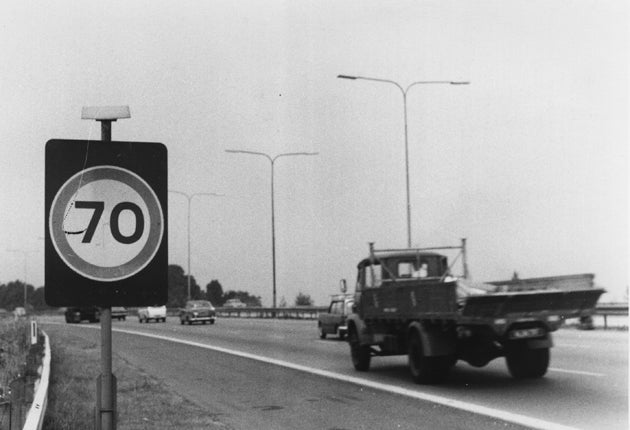Move to raise motorway limit to 80mph 'will boost economy'

Your support helps us to tell the story
From reproductive rights to climate change to Big Tech, The Independent is on the ground when the story is developing. Whether it's investigating the financials of Elon Musk's pro-Trump PAC or producing our latest documentary, 'The A Word', which shines a light on the American women fighting for reproductive rights, we know how important it is to parse out the facts from the messaging.
At such a critical moment in US history, we need reporters on the ground. Your donation allows us to keep sending journalists to speak to both sides of the story.
The Independent is trusted by Americans across the entire political spectrum. And unlike many other quality news outlets, we choose not to lock Americans out of our reporting and analysis with paywalls. We believe quality journalism should be available to everyone, paid for by those who can afford it.
Your support makes all the difference.Motorway speed limits could be raised to 80mph and those on city and town roads be reduced, with the decision on restrictions being made as much on cost as on safety. The Transport Secretary, Philip Hammond, said yesterday that decisive factors could include the economic benefits of faster travel as well as environmental concerns.
Britain's 70mph motorway speed limit has been in force since 1965 – when it represented the top speed of most cars on the roads at the time. In France and Italy the maximum speed is 81mph while in Ireland, Spain, Portugal and Belgium it is 75mph. Parts of the German autobahn network have no speed limit at all.
Mr Hammond said: "We need to do this on a pretty rigorous cost-benefit analysis basis...at the moment there are a clear set of criteria for making these decisions. Perhaps we ought to ask if we are using the right set of criteria." He suggested that in some towns speed limits could be reduced from 30mph to 20mph, on both environmental and safety grounds.
The Transport Secretary's comments came as a report from the RAC Foundation found that the number of traffic lights in the UK had risen by 30 per cent between 2000 and 2008, with the number in London increasing by 23 per cent to more than 6,000.
Produced by the former transport and planning chief Irving Yass, the report also revealed that the number of traffic signals equipped to give priority to buses went up from 3,801 at the beginning of 2007 to 8,425 at the end of 2008.
The number of junctions in London with a full pedestrian crossing stage – when all the lights for vehicles are at red – increased from 481 in 2000 to 783 in 2010. The report called for a review of such junctions and said the Department for Transport (DfT) should consider carrying out trials of flashing amber lights at times when there was little traffic, which would allow drivers to proceed with caution.
There should also be wider use of the "countdown" system which shows pedestrians exactly how long they have to cross the road, it said.
RAC director Professor Stephen Glaister said: "Lights have an important role to play but with ever more-congested streets they need to be very finely tuned to ensure they are not doing more harm than good."
Join our commenting forum
Join thought-provoking conversations, follow other Independent readers and see their replies
Comments